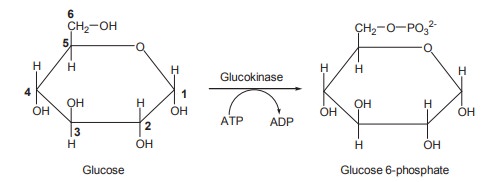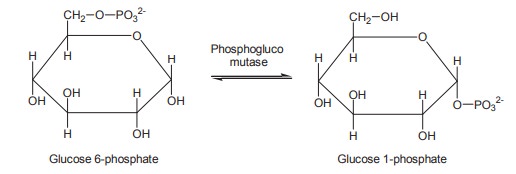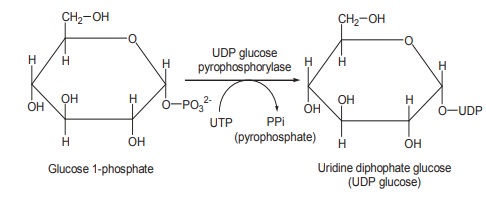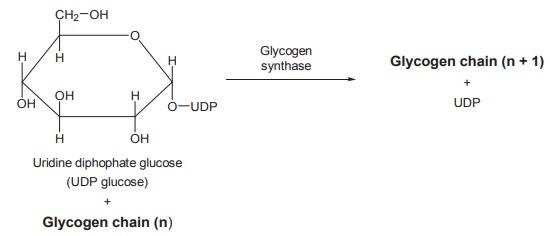Chapter: Biochemistry: Carbohydrate Metabolism
Glycogen biosynthesis
Glycogen biosynthesis
The process of biosynthesis of glycogen from
glucose is known as glycogenesis. This occurs in all the tissues of the body
but the major sites are liver and muscles. A considerable amount is synthesised
in kidney also.
Glycogenesis is a very essential process since
the excess of glucose is converted and stored up as glycogen which could be
utilised at the time of requirement. In the absence of this process the tissues
are exposed to excess of glucose immediately after a meal and they are starved
of it at other times. The following are the various reactions of glycogenesis.
Step 1
Glucose is phosphorylated to glucose
6-phosphate, a reaction that is common to the first reaction in the pathway of
glycolysis from glucose. This reaction is catalysed by hexokinase in muscle and
glucokinase in liver in the presence of ATP.

Step 2
Glucose 6-phosphate is then reversibly converted
to glucose 1-phosphate in a reaction catalysed by enzyme phosphogluco mutase.
This process requires Mg2+ and a small amount of glucose 1,6-diphosphate as
coenzyme.

Step 3
The glucose 1-phosphate is then activated by the
energy produced by the hydrolysis of uridine triphosphate (UTP) in the presence
of uridine diphosphate glucose pyrophophosrylase. This is a key reaction in
glycogen biosynthesis.

Step 4
UDP-glucose is the immediate donor of glucose
residues in the reaction catalyzed by glycogen synthase, which promotes the
transfer of the glucose residue from UDP-glucose to a nonreducing end of a
branched glycogen chain.

Step 5
When the chain has become long with more than 8
glucose units, a second enzyme, namely branching enzyme amylo 1-4 to 1-6
transglycosylase acts on the glycogen and helps in joining of 1,4 glycogen
chain with a similar neighbouring chain to form α 1-6 linkage, thus forming a
branching point in the molecule. Glycogen thus formed may be stored in liver,
muscles and tissues.
Related Topics